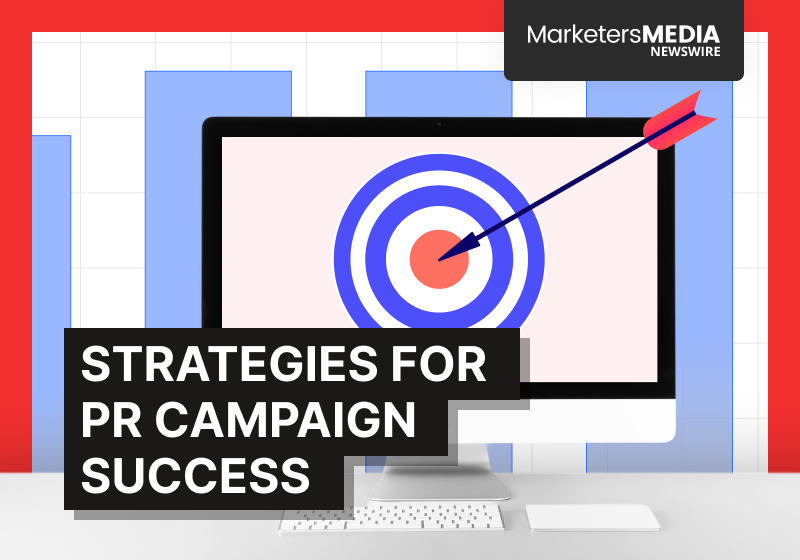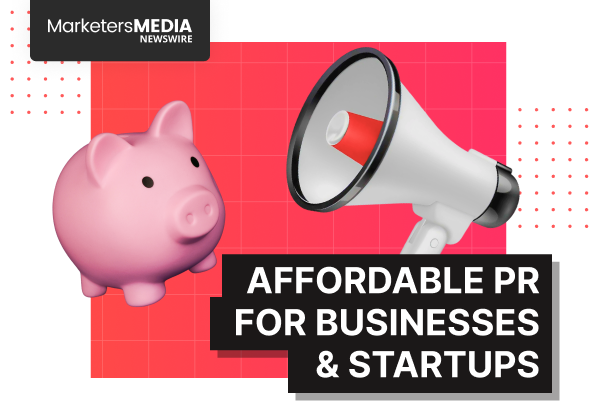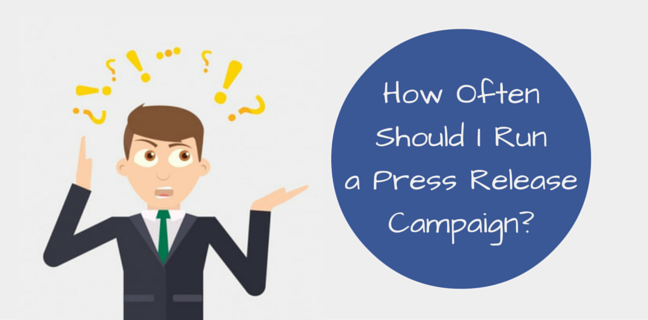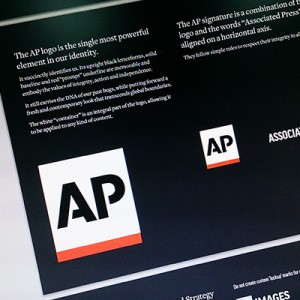Why do some brands consistently capture attention and build loyalty?
Often, it's through strategic public relations (PR) campaigns. More than just press releases, a PR campaign is a planned effort to shape public perception and achieve business goals. In today's crowded landscape, a solid PR strategy is crucial.
This blog will explore the key strategies for developing effective PR campaigns that deliver real results. Let's dive into the essentials of impactful public relations.
Understanding PR Campaign Strategies
Before diving into the exciting tactics of a PR campaign, two fundamental questions must be answered with precision:
What do you want to achieve? and Who are you trying to reach?
Setting the Foundation: Understanding Your Goals and Audience
Before any outreach begins, clarity is paramount. A successful PR campaign is built on a strong understanding of what you want to achieve and who you need to reach.
Defining Clear Objectives
Think of your PR campaign as a journey with a specific destination. Defining clear, measurable objectives provides that destination.
Instead of vague aspirations like:
- Increase brand awareness.
- Become viral.
- Be more popular.
Aim for specific milestones/targets like:
- Increase brand mentions by 20% in the next quarter.
- Drive 500 new leads through a specific campaign.
- Secure coverage in three key industry publications.
Clear objectives, often following the SMART framework (Specific, Measurable, Achievable, Relevant, Time-bound), provide the necessary focus and allow you to track your progress effectively. Without defined goals, you're navigating without a compass, making it difficult to determine success and measure your impact.
Real PR Campaign Example Using SMART: IKEA’s “Real Life Series” (2019)
Campaign Goal: Showcase IKEA’s furniture by recreating iconic living rooms from popular TV shows, positioning IKEA as both stylish and affordable.
| SMART Element | IKEA's Campaign Application |
| Specific | Recreate famous TV living rooms (from Friends, The Simpsons, and Stranger Things) using only IKEA products, to engage pop culture fans and highlight IKEA’s product range. |
| Measurable | Targeted increased online engagement, media coverage, and foot traffic to showrooms and online catalog views. Social shares, press mentions, and user interaction were tracked. |
| Achievable | Used existing product lines to replicate rooms, paired with digital ads, PR outreach, and in-store marketing. Visually striking, cost-effective to execute. |
| Relevant | Tapped into nostalgia and popular culture, appealing to millennials and families—key IKEA demographics—while reinforcing affordability and creativity. |
| Time-bound | Ran as a limited-time campaign in summer 2019 to build buzz around IKEA’s catalog and drive traffic ahead of the back-to-school season. |
Results:
- Global media coverage in outlets like Adweek, Hypebeast, and DesignTaxi.
- Massive social media engagement and sharing.
- Reinforced IKEA’s brand as clever, relevant, and design-forward—without losing its mass-market appeal.
Identifying and Understanding Your Target Audience
Once you know your destination, you need to understand who you're trying to connect with. Your target audience dictates everything from your messaging to the channels you use.
Questions to ask:
Who are they? What are their demographics, interests, and pain points? Where do they spend their time online and offline? What kind of language resonates with them?
Understanding your audience deeply allows you to tailor your message, ensuring it's relevant and impactful. Here's how you might answer the question above:
They’re solo or small-team SaaS founders—usually in their 30s, U.S.-based, and bootstrapping products without big marketing budgets. They’re highly technical or product-focused, spending most of their time on platforms like Twitter, Indie Hackers, Product Hunt, and Hacker News. Their interests revolve around building lean, profitable businesses, and they’re often skeptical of traditional PR or “fluffy” marketing. What resonates with them is clear, no-BS language that respects their time—messages that feel founder-to-founder, show value quickly, and cut through the noise with real outcomes, not buzzwords.
Crafting Your Core Message and Story
With your objectives and audience firmly in mind, the next crucial step is to define the heart of your campaign: your core message and the story you want to tell.
Developing a Compelling Narrative
Every successful PR campaign has a compelling narrative at its core. This isn't just about listing facts; it's about weaving together information in a way that resonates emotionally and intellectually with your target audience.
- What's the story behind your brand, product, or service?
- What problem are you solving?
- What makes you different and valuable?
Your narrative should be clear, concise, and authentic, capturing the essence of your message in an engaging way. Think about the key message pillars that support this overarching narrative – the core themes you want to consistently communicate. A strong narrative provides a foundation for all your communication efforts, ensuring a cohesive and impactful message across all channels.
Tailoring Your Message for Different Audiences
While your core narrative remains consistent, the way you present it may need to be adapted for different segments of your target audience. What resonates with a young demographic on social media might differ significantly from what captures the attention of industry professionals reading a trade publication. Here's a breakdown illustrating these differences:
| Element | Young Demographic | Industry Professionals |
| Tone | Conversational, casual, and relatable | Professional, confident, and informative |
| Focus / Emphasis | Instant value, social proof, simplicity, and trends | Credibility, long-term benefits, proven outcomes, and data-backed results |
| Language / Vocabulary | Slang and emoji-friendly, shorter sentences, popular culture references | Industry-specific jargon, formal grammar, complete sentences |
| Format | Visual-heavy (images, reels, carousels), snackable text | Long-form, structured, with clear sections and supporting stats or quotes |
| Call to Action (CTA) | “Try it free today ” / “DM us to get started” | “Request a demo” / “Download the full whitepaper for details” |
| Details Highlighted | Social proof (influencer quotes, testimonials), ease of use, FOM | Metrics, partnerships, distribution reach, brand reputation |
| Channel | Instagram, TikTok, Twitter, YouTube Shorts | Trade magazines, LinkedIn, industry blogs, email newsletters |
| Narrative Framing | “This is fun, easy, and trending—why not try it?” | “This aligns with your goals and delivers measurable ROI” |
Key PR Campaign Strategies and Tactics
With a solid understanding of your objectives and target audience, you can now explore the diverse strategies and tactics available to bring your PR campaign to life. The most effective campaigns often leverage a blend of these approaches, strategically chosen to maximize impact and reach.
#1 Media Relations: Building Bridges with Journalists and Outlets
Building relationships with journalists, bloggers, and influencers is key for credible and wide-reaching PR. Essential tactics include:
- Compelling Press Releases & Media Kits: Craft newsworthy, clear announcements. Provide journalists with necessary info: company background, key stats, visuals, contact details.
- Strategic Pitching: Target relevant journalists/outlets with personalized pitches highlighting why your story matters to their audience. Avoid generic emails.
- Newswire Services (e.g., MarketersMEDIA): Expand your reach by distributing press releases to a wide network of media, increasing visibility (e.g., Business Insider, MarketWatch, Yahoo! News). Offers targeted distribution options.
- Relationship Building: Be a reliable source, understand journalist deadlines, and respect their independence. Focus on mutual benefit, not just transactions.
- Understanding Media Types: Adapt your approach for traditional (newspapers, TV) vs. digital media (online news, blogs, podcasts) in terms of pitching and content
#2 Content Marketing: Telling Your Story Directly
In today's digital age, you don't always need to rely solely on traditional media to get your message across. Content marketing empowers you to become your own publisher, creating valuable and engaging content that attracts and resonates with your target audience. This can include:
- Blog Posts and Articles: Sharing insights, expertise, and stories related to your industry and brand.
- Infographics and Visual Content: Presenting data and information in an easily digestible and shareable format.
- Videos and Webinars: Engaging your audience through dynamic visual and audio experiences.
- Ebooks and White Papers: Providing in-depth information and establishing thought leadership.
By consistently creating high-quality content, you can attract organic traffic, establish yourself as a trusted resource, and nurture relationships with potential customers and stakeholders.
#3 Social Media Engagement: Connecting and Conversing
Social media platforms offer a direct line of communication with your audience, allowing for real-time engagement and the building of communities. An effective social media strategy within your PR campaign involves:
- Platform Selection: Choosing the social media channels where your target audience is most active.
- Content Creation and Curation: Sharing engaging and relevant content that aligns with your brand and PR objectives.
- Active Listening and Engagement: Monitoring conversations around your brand and industry, responding to comments and messages, and participating in relevant discussions.
- Running Contests and Campaigns: Utilizing interactive elements to increase brand awareness and engagement.
- Leveraging Social Media for Announcements and Crisis Communication: Providing timely updates and addressing concerns directly.
#4 Influencer Marketing: Leveraging Trusted Voices
In today's digital landscape, influencers have emerged as powerful voices capable of shaping opinions and driving action.
Influencer marketing involves collaborating with individuals who have a significant and engaged audience within your target market. Key aspects of influencer marketing include:
- Identifying Relevant Influencers: Research and identify influencers whose audience, values, and content align with your brand and campaign objectives. Consider factors like their reach, engagement rate, authenticity, and relevance.
- Establishing Authentic Partnerships: Focus on building genuine relationships with influencers rather than purely transactional ones. Collaborate on content that feels natural and resonates with their audience.
- Different Types of Collaborations: Explore various options, such as sponsored posts, product reviews, co-created content, event appearances, and affiliate partnerships.
- Transparency and Disclosure: Ensure all collaborations comply with relevant regulations regarding disclosure of sponsored content.
#5 Events and Experiential PR: Creating Memorable Encounters
Events, both online and offline, offer opportunities to create direct and memorable experiences for your target audience. Experiential PR aims to immerse individuals in your brand story, fostering deeper connections and generating positive buzz. This can involve:
- Hosting Product Launches and Announcements: Creating engaging events to generate excitement around new offerings.
- Organizing Workshops and Seminars: Providing valuable content and positioning your brand as a thought leader.
- Participating in Industry Conferences and Trade Shows: Increasing visibility and networking with key stakeholders.
- Creating Unique Pop-Up Experiences: Offering interactive and shareable brand encounters.
- Leveraging Virtual Events and Webinars: Expanding reach and accessibility.
#6 Crisis Communication Planning: Preparing for the Unexpected
No matter how well-planned your campaign is, unforeseen events can occur that could negatively impact your brand's reputation. Having a proactive crisis communication plan in place is essential for mitigating potential damage. This involves:
- Identifying Potential Risks: Anticipating scenarios that could lead to a crisis.
- Developing Key Messages and Protocols: Preparing pre-approved statements and outlining communication procedures.
- Establishing a Crisis Communication Team: Designating responsibilities and ensuring clear lines of communication.
- Monitoring Media and Social Channels: Staying informed about the unfolding situation and public sentiment.
- Responding Swiftly and Transparently: Addressing the issue promptly, honestly, and with empathy.
#7 Measurement and Evaluation: Tracking Your Progress and Impact
A crucial element of any successful PR campaign is the ability to measure its effectiveness. By tracking key performance indicators (KPIs), you can determine what's working, identify areas for improvement, and demonstrate the value of your PR efforts. This involves:
- Identifying Relevant KPIs: Selecting metrics that align with your campaign objectives (e.g., media mentions, website traffic, social media engagement, lead generation, sentiment analysis).
- Utilizing Measurement Tools: Employing analytics platforms and media monitoring services to gather data.
- Analyzing Results and Generating Reports: Interpreting the data to understand the impact of your activities.
- Making Adjustments and Optimizations: Using insights gained from measurement to refine your strategy and tactics for ongoing and future campaigns.
Examples of Effective PR Campaigns
To further illustrate the power of well-executed PR strategies, let's take a look at a couple of examples of successful campaigns and highlight the key elements that contributed to their impact.
Example 1: Dove's "Real Beauty" Campaign
The Strategy: This long-running campaign, initiated by Unilever's Dove brand, aimed to challenge conventional beauty standards and promote a more inclusive definition of beauty.
Key Tactics:
- Provocative Content: The campaign featured real women of diverse shapes, sizes, and ethnicities in their advertising, sparking conversations and challenging the often unrealistic portrayals of beauty in media.
- Documentary-Style Videos: Short films like "Evolution" and "Real Beauty Sketches" went viral, emotionally resonating with audiences and generating significant media coverage.
- Social Media Engagement: The campaign encouraged women to share their own definitions of beauty using specific hashtags, fostering a sense of community and amplifying the message.
- Ongoing Evolution: The campaign continued to evolve over the years, addressing different aspects of self-esteem and body image, maintaining its relevance and impact.
Results and Impact: The "Real Beauty" campaign significantly boosted Dove's brand awareness and positive sentiment. It sparked a global conversation about beauty standards, earned numerous awards, and is widely regarded as a benchmark for purpose-driven marketing and PR.
Example 2: Airbnb's "Live There" Campaign
The Strategy: Airbnb's "Live There" campaign aimed to differentiate itself from traditional tourist accommodations by positioning itself as a way to truly experience a destination like a local.
Key Tactics:
- Focus on Experience, Not Just Accommodation: The campaign emphasized the unique and authentic experiences available through staying in Airbnb homes in local neighborhoods.
- Compelling Storytelling: Marketing materials featured stories of travelers immersing themselves in local cultures and communities.
- Digital Content and Video: Engaging videos and online content showcased the "Live There" concept, inspiring travelers to think beyond typical tourist attractions.
- Partnerships with Locals: The campaign often highlighted local hosts and their unique insights into their communities.
Results and Impact: The "Live There" campaign effectively positioned Airbnb as more than just a booking platform. It resonated with travelers seeking authentic experiences and contributed to the brand's growth and cultural relevance. It shifted the conversation from just finding a place to stay to truly experiencing a destination.
To Recap
Successful PR campaigns blend strategy, creativity, and audience understanding. Go beyond simply sending messages; craft compelling stories, target the right channels, and build strong connections. Define clear goals and know your audience deeply to lay the foundation for impactful outreach. From media relations and content to social media and crisis planning, a range of tactics can connect you with stakeholders.
Remember, PR is ongoing; measure results to adapt and improve. Mastering PR campaign strategies means being intentional, empathetic, and adaptable to build your brand and achieve your goals through effective communication.
Now you have an idea for your campaign, what about the skills needed? Check out our blog on must-have public relations skills to help you out.
Free Press Release Template
Tell us where to send your PDF:








